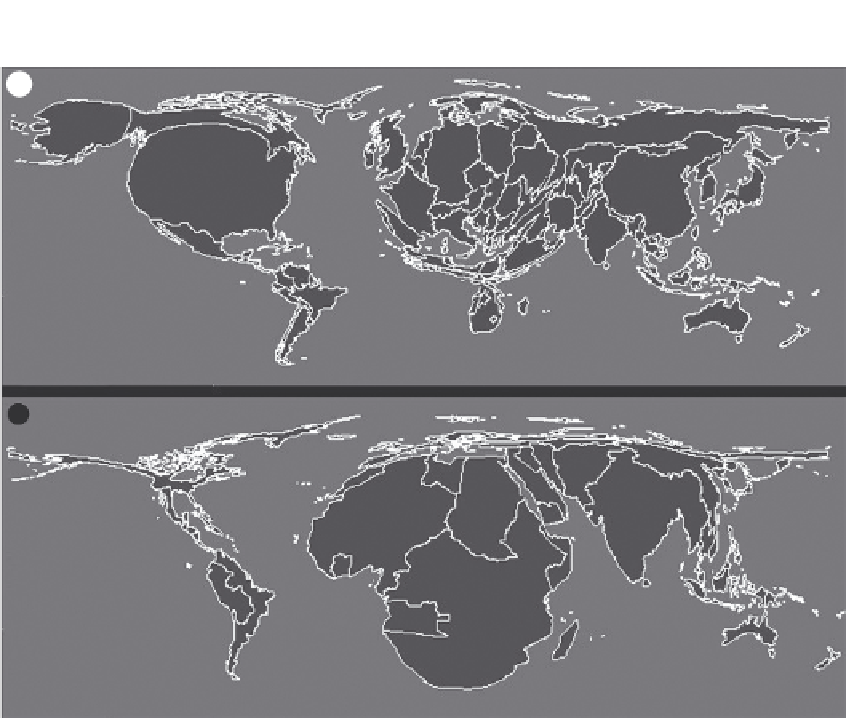Geoscience Reference
In-Depth Information
(a)
(b)
Fig. 7.14
Spatialmapcomparisonof(a)nationalcumulativecarbondioxideemissionsbycountryfor1950-2000and
(b)theregionaldistributionoffourclimate-sensitivehealthconsequences(malaria,malnutrition,diarrhoea
andinlandlood-relatedfatalities).ReproducedfromPatzetal.(2007),withpermissionfromJonathanPatz.
notable exception of China, the large population of which masks its lower per-capita
emissions).
7.5 Thebiologyofreducinganthropogenicclimatechange
It is a combination of human short-circuiting of the deep carbon cycle (through fossil
fuel burning) and altering of the fast carbon cycle (through land-use change such as
deforestation) that is increasing atmospheric carbon dioxide. Similarly, it is possible
for us to take carbon cycle actions that reduce climate change, or at least the rate of
change. Improving the efficiency with which fossil fuels are consumed and switching
reliance towards non-fossil energy resources will be discussed briefly in the next
chapter. However, in terms of human-ecology (our own species' demographics and
relationship with other species) we might manipulate the fast carbon cycle through
land-use, and perhaps marine, management. The aim would be to use the fast carbon
cycle to offset carbon dioxide from fossil carbon (part of the deep carbon cycle) by
increasing fast-cycle carbon sinks as well as partly replacing dependence on fossil




Search WWH ::

Custom Search